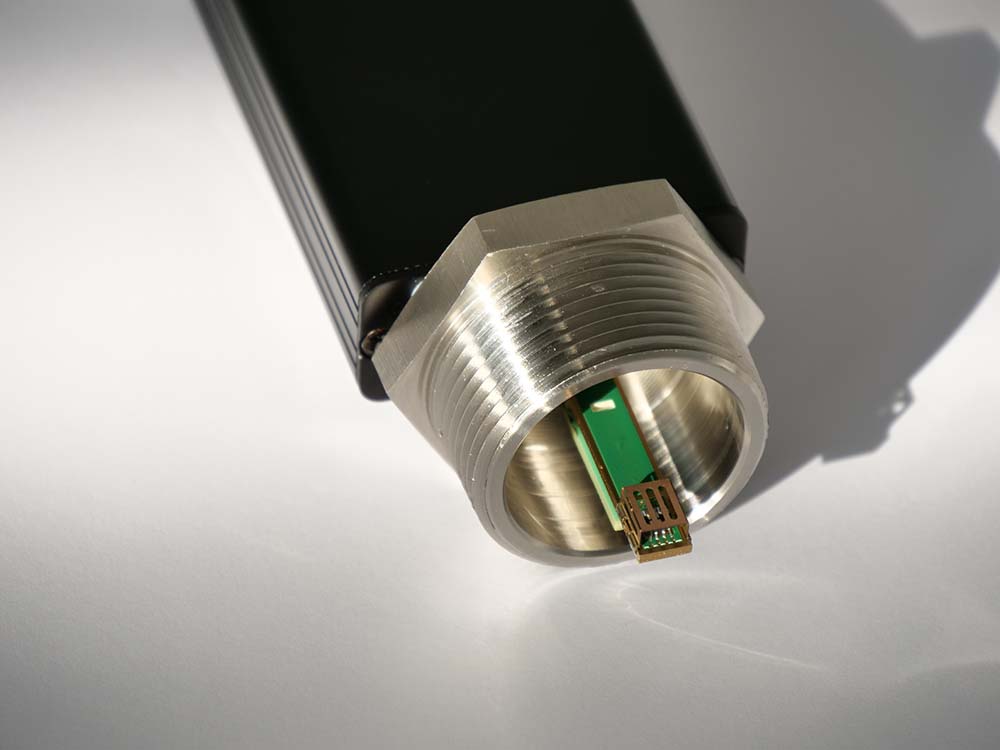Sensor for the viscosity and density of fluids

The fluidity and specific weight of organic liquids such as lubricating oils and fuels are decisive parameters for many applications. Information about this is desirable in many applications, i. e. for quality assessment, for the detection of aging and admixtures as well as changes caused by high or low temperatures, and is absolutely necessary in critical applications.
At Fraunhofer ENAS, a viscosity and density sensor has been developed, which is based on MEMS resonators that are influenced by the fluid to be tested. Silicon cantilevers are mechanically excited by piezoelectric aluminum nitride transducers, and the resulting vibration is detected. The frequency dependence of the vibration properties are measured. The resonance frequency of the cantilevers is significantly changed by the density of the fluid to be tested, while the damping of the resonators is influenced by the viscosity. However, both vibration parameters are influenced by the respective other fluid property. A suitable mathematical algorithm has been developed that interprets the physical relationships from the vibration parameters viscosity and density. For practical tests in a wide temperature range from – 40 °C to 150 °C, sensors are available that are screwed into a fluid-filled equipment by means of NPT threaded nipples. An integrated controller generates the excitation signal and processes the signals from the vibration detection. It provides information about the viscosity of the liquid in a measuring range of 0.5 cP ... 100 cP and about the density in a range of 0.6 kg/l ... 1.5 kg/l to a USB interface.
 Fraunhofer Institute for Electronic Nano Systems
Fraunhofer Institute for Electronic Nano Systems